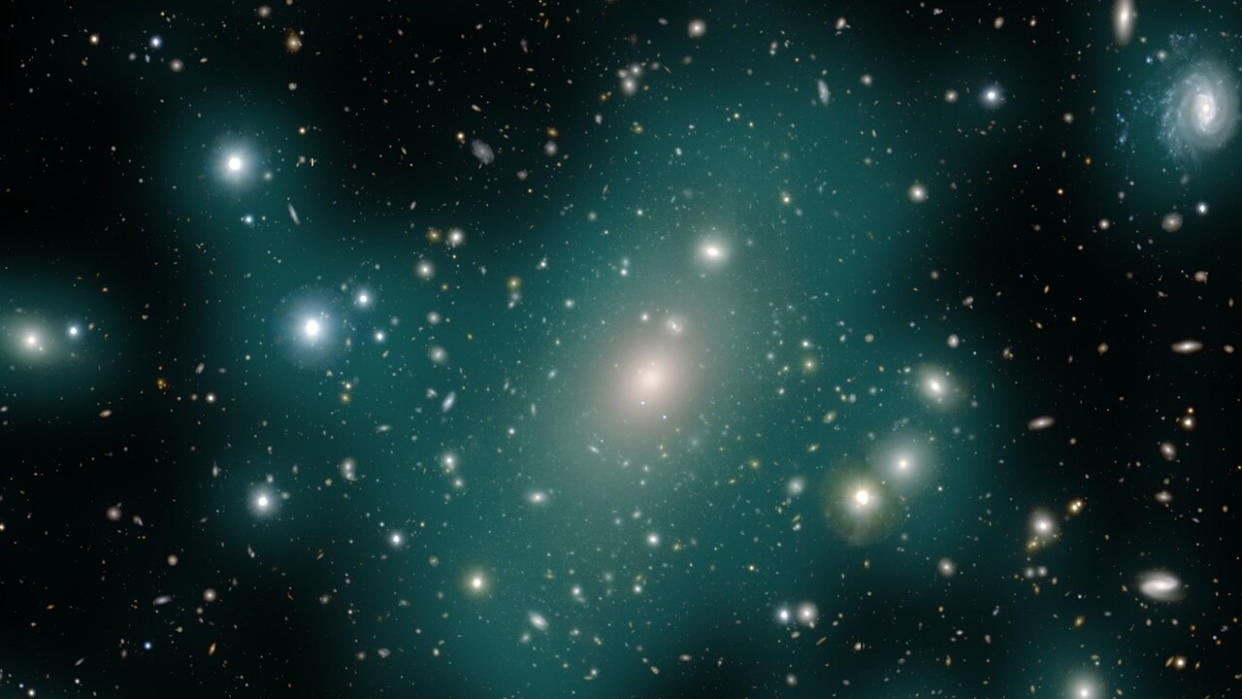A cosmic 'fossil record' could be hidden among orphaned stars

Astronomers plan to study stars roaming the cosmos alone.
The forthcoming Vera C. Rubin Observatory, which will see "first light" in 2025, will study the glow from stars that were ripped from their home galaxies, to better understand how the universe has evolved.
The investigation of this faint and difficult-to-see "intracluster light" from stars between galaxies in galactic clusters should reveal a cosmic "fossil record", astronomers say. The Legacy Survey of Space and Time (LSST) conducted by Rubin will be the first astronomical survey to detect this type of light in thousands of galaxy clusters. By helping scientists better understand the evolution of these clusters, the LSST aims to tell the story of the large-scale evolution of the universe as a whole.
"Stars stripped from their galaxies end up populating the space between galaxies in a cluster. These stars are like the dust released from a piece of chalk when you write on a blackboard," Mireia Montes, a research fellow at the Institute of Astrophysics of the Canary Islands, said in a statement.
"By tracking the stellar chalk dust with Rubin, we hope to be able to read the words on the galaxy cluster blackboard," added Montes, also a member of the Rubin/LSST Galaxies Science Collaboration.
Related: 3,200 megapixels! The camera heart of future Vera Rubin Observatory snaps record-breaking 1st photos
Orphan stars are ghostly cosmic storytellers
When stars are gravitationally bound together in clutches of hundreds of millions to hundreds of billions, galaxies like the Milky Way are born. And galaxies also sometimes find themselves preferring company, drawn together by gravity in galactic groups of hundreds or thousands, creating galactic clusters.
These clusters represent the universe's largest structures formed by gravity, taking billions of years to be born and then evolve. If this evolution could be viewed in fast-forward, it would create a narrative of dramatic interactions between galaxies, causing stars to be wrenched free and dwell between galaxies as cosmic orphans.
In lieu of a cosmic fast-forward button, the stars that are disrupted in these interactions can act as storytellers, delivering this narrative to astronomers via the ghostly glow they provide between galaxies in clusters. This is no mean feat, however, because this intracluster light is 1,000 times fainter than the finest stars we can perceive with our eyes, meaning it has thus far been hidden from many current telescopes and cameras.
When Rubin begins the LSST in 2025, the observatory, located on Cerro Pachón mountain in northern Chile, will use the largest digital camera ever constructed to scan the entire sky over the southern hemisphere.
Related: The mysteries of the dark universe could be solved by the Rubin Observatory

Returning to the same regions of the sky every few nights over a 10-year period, Rubin will capture millions of high-resolution images of distant galaxy clusters. Scientists will then be able to stack these images together, creating the largest ultra-long-exposure images ever developed. Each of these field-of-view composite images will reveal more intracluster light in clusters with a single observatory, even exceeding the total amount of intracluster light collected prior to the start of the LSST by other observatories and telescopes.
Related Stories:
— 400 Earth-size rogue planets could be wandering the Milky Way
— The mysteries of the dark universe could be solved by the Rubin Observatory
— Rubin Observatory and Google will store astronomy data in the cloud
Expanding the number of clusters with intracluster light visible from a mere handful, to thousands, won't just reveal the distribution of visible matter such as these faint orphan stars, however. The study should also help astronomers infer the distribution of dark matter. This form of matter doesn't directly interact with light, and thus remains invisible, despite providing the gravitational influence that prevents galaxies from flying apart internally. Dark matter accounts for an estimated 68% of the matter in the universe, and thus represents one of the deepest cosmic mysteries facing scientists.
"There's so much we don't know about intracluster light. The power of Rubin is that it's going to provide us with lots of clusters of galaxies that we can explore," Montes said."Intracluster light may look like something very small and insignificant, but it has a lot of implications. It complements what we already know, and will open new windows into the history of our universe."
